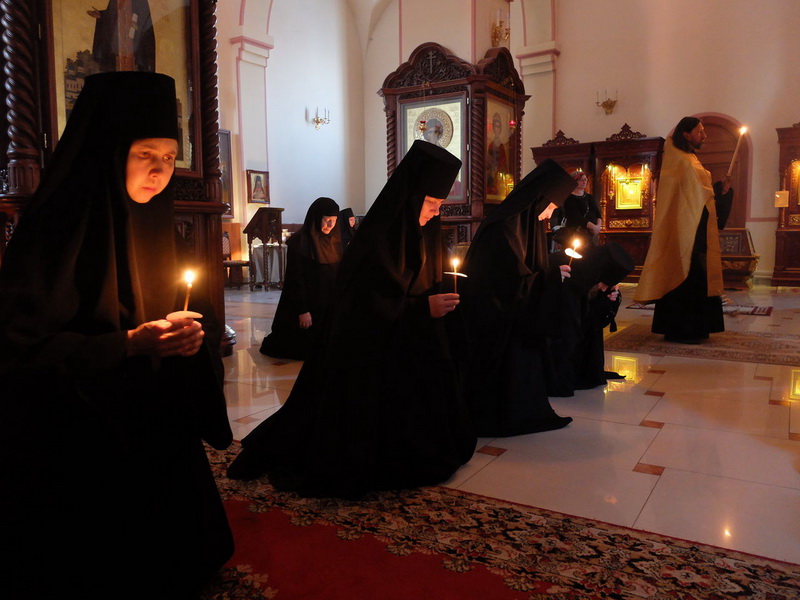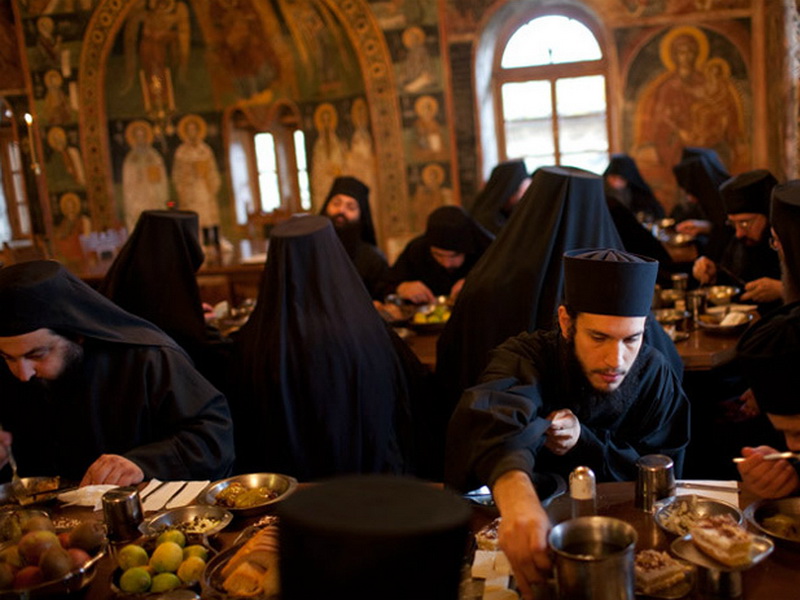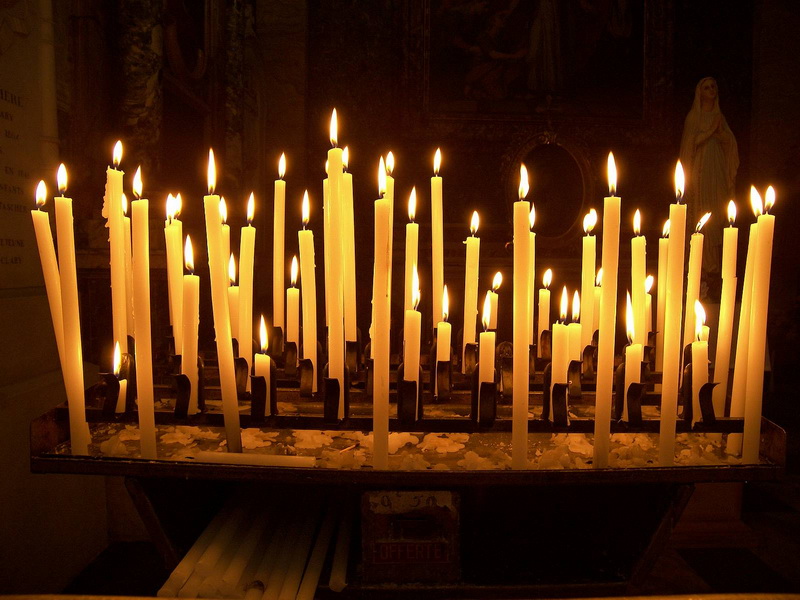One day in the monastery
Back to "Religious Tourism in Belarus"
It is impossible to imagine Christianity as a religion without such an attribute as monasteries. The first monasteries arose in the III century. AD On the territory of Egypt. This is due to the fact that due to the rapid spread of Christianity, the canons along which the believers lived began to weaken. Then the devotees began to go to the mountains and deserts - away from the world and its temptations. Such people were called hermits, they laid the foundations of monastic life. Over time, the tradition of asceticism began to spread in neighboring Palestine, Rome and far from Constantinople. In Western Europe, monasteries began to appear in the middle of the IV century.
On the territory of Belarus, the first monasteries arose with the assertion of Christianity in the Polotsk and Turov princedoms. The first monastery on the territory of Belarus is considered to be the monastery in Zaslavl, founded by the Polotsk princess Rogneda and her son Izyaslav. Rogneda, who took monastic vows under the name of Anastasia, is considered the first female nun in the territory of Eastern Europe. The emergence of the Polotsk Holy Euphrosyne Monastery due to the activities of Efrosinia Polotskaya - the first Belarusian Holy, intercessor of the Belarusian lands. Also in the 12th century, the Belchitsky Borisoglebsky monastery (now not existing) appears on the territory of Belarus, in total there were more than 127 monasteries in Belarus from the 12th to the beginning of the 21st century, about which there were some information, including not only Orthodox, but also Catholic monasteries.
The largest number of Catholic monasteries belonged to the Order of the Bernardines, who appeared in the Grand Duchy of Lithuania in 1468. The monks of the order were distinguished by piety and sincere, not fanatical, religiosity, they were often very educated, always cheerful and benevolent, for which they enjoyed universal love. The Bernardine monasteries were in Nesvizh, Zaslavl, Minsk, Slonim, Ivye, Druje, Slutsk, Mozyr, Berezina, and others.
Also very common were the monasteries of the Jesuit Order - a monastic association, which was founded in opposition to the reform movement. The main task of the order was the restoration of the shaken power of the Catholic Church. To this end, the Jesuits began to massively create a huge number of monasteries, which opened pharmacies and free schools for those who wished. The education system created by the Order was considered the best in the world until the middle of the 18th century. Jesuit colleges were founded in Nesvizh, Brest, Bobruisk, Vitebsk, Grodno, Minsk, Mogilev, Orsha and other Belarusian towns.
Great influence in the territory of the Commonwealth was the Order of the Basilians - Catholic monasticism, adhering to the Byzantine rite. The Order was founded in 1617 on the basis of monasteries that adopted the Brest Union of 1596. The activities of the Order promoted the transition to the Catholicism of the Eastern rite of the Orthodox population of the Polish-Lithuanian Commonwealth. Monasteries of basilians existed in Bobruisk, Grodno, Minsk, Orsha, Ruzhany and Tolochin.
Now the buildings of most of the Catholic monasteries are either given to the Orthodox Church, or used as archives, government institutions, libraries, etc. Currently, there are 25 monasteries, including the largest of them: The Savior and St Euphrosyne Convent in Polotsk, Holy Dormition Monastery Zhirovichi, St. Elisabeth Convent in Minsk, Uspensky monastery in Pustynki, Mstislavsky district, Mogilev region.
These monasteries hospitably open the doors for visitors who want to see with their own eyes the monastic way of life and try to live for several hours on the monastic charter: to take part in the service, to try the fast food in the refectory of the monastery, to serve monks. Also, the guests of the monastery will have an opportunity to know when they put candles for "repose" and "for health", what prayers should be read in certain cases, and also how festive services differ on big church holidays: Easter, Trinity, Christmas.
 |
St. Elisabeth Convent
It was founded in the 1990s in the north of Minsk, in a place where churches did not exist before. Named after the Grand Duchess Elizabeth Feodorovna. The complex of the monastery consists of seven temples: the monastery - the lower in honor of St. Nicholas the Wonderworker and the upper in honor of the patron saint of the monastery of the Martyr Elizabeth, the house church in honor of the blessed Xenia of Petersburg, the temple in honor of the Resurrection of the righteous Lazar Chetverdnevniy in the Northern cemetery of Minsk, the temple in honor of The icon of the Mother of God "Derzhavnaya". Also the complex includes more than twenty different workshops: icon painting, ceramics, jewelry, candles, etc. At the monastery is opened a refectory for pilgrims and several monastery shops where you can buy candles, church utensils, clothes and much more. In 30 km from the monastery there is a courtyard, on the territory of which there are workshops, vegetable gardens are broken, a contact zoo is working. All the products that the monastery produces can be purchased in a store nearby. During the tour of the monastery complex you will learn the history of its creation, a nun or novice conducting an excursion, will tell about the basic canons and traditions of Orthodoxy. Also, you can visit the workshops for making pottery and candles, and after lunch at the monastery refectory. Visit the monastery in the framework of excursions "The tempels of Minsk" and "Belarus is a country of four religions". |
 |
The Savior and St Euphrosyne Convent in Polotsk
Every year, many pilgrims come to the ancient Polotsk, the center of Belarusian Orthodoxy and spirituality, to visit the Spaso-Euphrosyne Monastery, where relics are stored - the relics of St. Euphrosyne of Polotsk and the Cross of Euphrosyneus - a symbol of the revival of Belarusian spirituality. The Savior-Euphrosyne Monastery is one of the first women's monasteries in the territory of Kievan Rus. It was founded in the XII century. The Monk Euphrosyne of Polotsk. On the territory of the monastery there are not only monastic cells and outbuildings, but also temples. The pearl of the monastery is the Spaso-Euphrosyne church with unique frescoes of the XII century, in which the Euphrosyne's cross is kept. Also on the territory of the complex is the Church of the Holy Savior, which the architect Ioan managed to build in just 30 weeks. During the excursion you will learn about the life and work of the Monk Euphrosyne of Polotsk, as well as the history of the construction of the monastery, the monastic way of life, you can take part in the service, see the relics of St. Euphrosyne and the Cross, taste monastic food, and serve nuns. You can visit the monastery as part of the excursion "Polotsk". |
 |
Holy Dormition Monastery Zhirovichi
Holy Dormition Monastery in the village Zhirovichi, Slonim district, Grodno region was first mentioned in 1587. The history of the founding of the monastery is inextricably linked with the icon of the MostHoly Mother of God, found in the spring of 1494 near the village. The young shepherds discovered an icon from which a bright glow emanated, in the branches of a tree. The children brought her to the master, who owned the land where the icon was found. In honor of the icon, the master promised to lay a church in Zhirovichi. Subsequently, to the Miraculous Image of the Mother of God, people began to flock to seek monastic life and a monastery was formed in Zhirovichi. Since 1613. The monastery belonged to the basilians, and from 1828 on the basis of the monastery the Lithuanian Theological Seminary was established. The modern complex of the monastery was established in the 17th and 18th century, when the Holy Assumption Cathedral, the St.Java and the Holy Cross Exaltation churches, a belltower, a seminary, outbuildings, a garden were planted, and the monastery was surrounded by a stone wall. During the tour of the monastery you can see and attach to the miraculous icon of Our Lady Zhirovichskaya, hold a conversation with the priest on topics of interest to you, visit a unique healing spring where you can dip into the font or simply collect miraculous water. Lunch is possible at the monastery if desired. You can visit the monastery as part of the excursion "Holy Dormition Monastery Zhirovichi - Slonim" |
 |
Uspensky monastery in Pustynki
Uspensky monastery is located on the place of the village Pustynki, Mstislavsky district, Mogilev region, near the border of Russia. According to legend, the monastery was founded in 1380, when the blinded prince Lugven, having washed himself with water from the local crinica, miraculously received his sight. In honor of this event on this place the prince placed the chapel and ordered the founding of the monastery. Until 1601, the monastery belonged to the Orthodox Church of the Grand Duchy of Lithuania, then under the administration of the Uniate Church, and from 1839 - the Russian Orthodox Church. During its existence the monastery was repeatedly destroyed, burnt and restored again. During the Soviet era, the temples located on the territory of the complex were destroyed, and the remaining buildings housed houses. Today in the ten partially preserved buildings of the monastery live monks, and in place of the miraculous crinitsa restored the church and equipped a font. The monks will tour the monastery, during which you can dip into the font in the place of a miraculous crinica, which has become a recognized place of pilgrimage. In addition, believers can worship the Face of Jesus Christ, miraculously manifested on the wall of the Intercession Church. You can visit the monastery in the framework of the excursion "Mstislavl-Pustynki". |
The Belarusian tour operator "Automated tourism technologies" offers organized and individual group tours around Belarus on religious topics. During such excursions, tourists will be able not only to get acquainted with the history of religions, but also participate in church rituals, talk with priests, priests and imams, and also look at the monastic way of life from the inside.
You can register and order these and other excursions on religious topics on our portal Application for tour organization